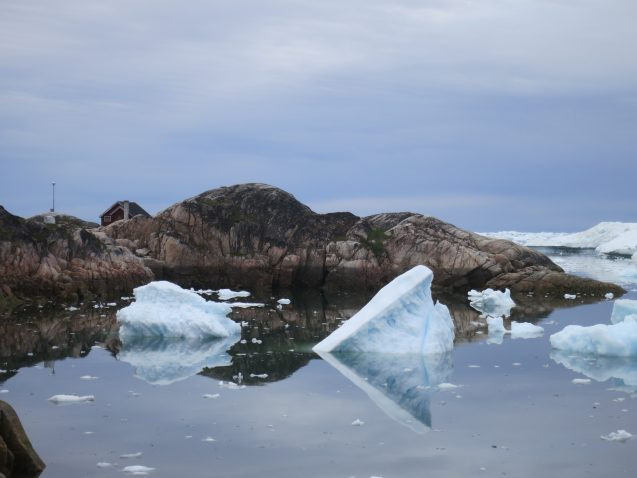Greenland Ice Sheet Saw Record Loss in 2019
An international team of polar researchers says that the Greenland ice sheet experienced record loss in 2019.
An international team of polar researchers says that the Greenland ice sheet experienced record loss in 2019. The reduction of 532 billion tons in mass dramatically broke the previous record year of 2012, when 464 billion tons of ice went into the ocean.
Preliminary analyses had already suggested that 2019 would be Greenland’s worst recorded year. The team confirmed it by evaluating satellite observations and data from computer models.The findings were reported this week in the journal Communications Earth & Environment.
The Greenland ice sheet is a major contributor to global mean sea level rise. It was responsible for about 0.76 millimeters per year, out of a total of about 3.5 millimeters per year from 2005 to 2017. The five biggest years of ice loss in Greenland have all occurred in the past decade. As a result of last year’s losses, global mean sea level rose 1.5 millimeters.

Mass balance of the ice sheet results from the difference between increase due to snowfall and loss due to a combination of melting and iceberg discharges along the edges of the sheet. In 2019, weather conditions heavily favored loss. “By comparing satellite data with regional climate models, we were able to see exactly which process was involved, how much it contributed and which general weather patterns were decisive,” said study coauthor Marco Tedesco, a Lamont-Doherty polar scientist. Among other things, “snowfall was lower than the long-term average; that contributed to the record,” he said.
Using simulations with a regional climate model, the authors attributed the anomalously low melt in 2017–2018 to cold summers in western Greenland and high snowfall in the east.
To determine the 2019 ice loss, researchers from Germany’s Alfred Wegener Institute, and other institutions, including Columbia University’s Lamont-Doherty Earth Observatory, evaluated satellite data from NASA’s GRACE mission and its successor, GRACE Follow-On. The satellites provide measurements from which highly accurate maps of the earth’s gravity can be calculated for each month. The redistribution of masses changes the gravitational attraction in time and space. In Greenland, as ice is lost to the ocean, this redistribution of mass reduces its gravity. The researchers compared the satellite data with simulations of regional climate models that represent snowfall and melting of the ice sheet.

“After two years of a breathing pause, mass losses rose sharply again in 2019 and exceeded all annual losses since 1948, probably since more than 100 years,” said Ingo Sasgen, a glaciologist at the Alfred Wegener Institute and lead author of the study. “More and more often we have stable high pressure systems over the ice sheet, which favor the influx of warmer air from the mid-latitudes, one of the conditions promoting melt. We saw a similar pattern in the previous record year 2012.”
The NASA missions have proven crucial for continuous observation of Greenland. The GRACE mission, which ended in summer 2017, provided observations on ice loss in polar regions over a period of 15 years. After a gap of about a year, monitoring was picked up in summer 2018 by GRACE Follow-On.
Among the phenomena contributing to the increased ice loss, Arctic summer temperatures are increasing about one and a half times faster than the global average.
Related: Unusually Clear Skies Drove Greenland Ice Loss in 2019
